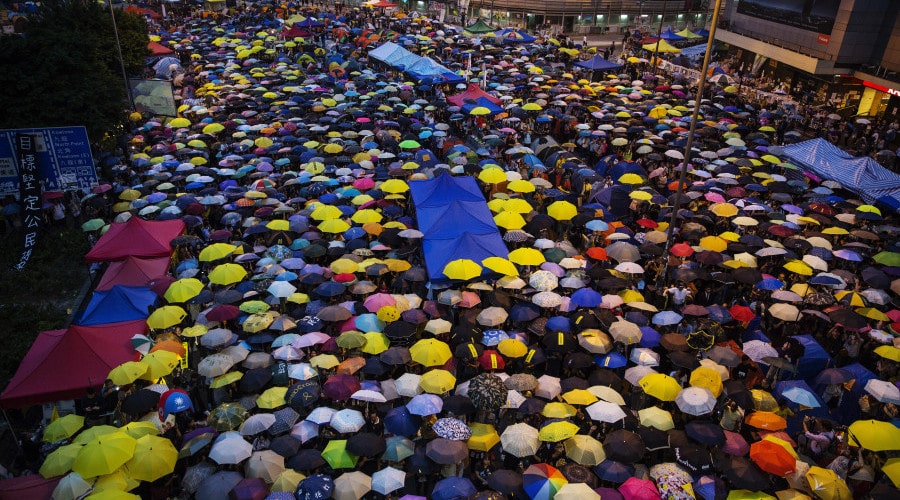Hong Kong, Mesh networks help the revolution
They have called it “the revolt of the umbrellas” and it is one of the most stubborn popular demonstrations of the twenty-first century, perhaps because at the head there are young people animated by passion and desire for freedom.
Protesters in Hong Kong are in their 16th week of protests, demanding the final withdrawal of an extradition bill, the resignation of Carrie Lam, Hong Kong’s chief executive, an investigation into police brutality during the protests, and the release of protesters who have been arrested.
Finally, more generally, greater democratic freedoms considering that, yes, Hong Kong belongs to China, but in fact it is a special administrative region with its own currency, political system and cultural identity. “One China, two systems”, it is appropriate to say.
But despite the incessant protests under the indignant eyes of the West, the Beijing government is not backing down. Starting with censorship. The
Great Firewall
of China is now a well-known paper: it is a government censorship filter that prevents access to more than 18 thousand sites, including social networks and content defined as anti-government. Even Instagram, which until first had been considered harmless, was blacked out because photos of the protest began circulating with hashtags such as #OccupyCentral and #OccupyHK.
However, we can safely say that, even before the umbrella, the symbol of the Hong Kong protest is the smartphone. The former British colony has become, in fact, a laboratory of technology combined with ingenuity at the service of protest. Thanks to
mesh networks
, protesters circumvent the obstacle of censorship and thus make use of the democratic and liberating potential of digital.

What are mesh networks? When we talk about mesh networks, we are referring to a peer-to-peer architecture, as opposed to the client-server architecture, in which each node plays an “equal” role. It is therefore a very interesting technology because it creates a local and distributed network.
One example is
Bridgefy
, a messaging app that doesn’t use SMS or internet connections to work, which could potentially be put under government control. The graphical interface is very similar to that of common messaging apps, but in Bridgefy the phones are put in constant communication with each other and function as nodes of a single large network: messages sent to a contact too far away to be reached by the bluetooth simply jump from one phone to another to reach the recipient, without, of course, intermediaries being able to read it.
But Bridgefy isn’t alone. FireChat
, an app developed for Android and iOS and launched last March by the company Open Garden, also allows smartphones to form a temporary network between them using Wi-Fi or even just Bluetooth. All it takes is for people with the app to be within 70 meters of each other to become interconnected nodes that bounce communications off each other, without the need for a cellular network or an internet connection. So, once the law was made, the deception was found.
It is thanks to this system, safe and proof of prying eyes and ears, that the young people of Hong Kong have been taking to the streets for weeks now and claiming their rights.
